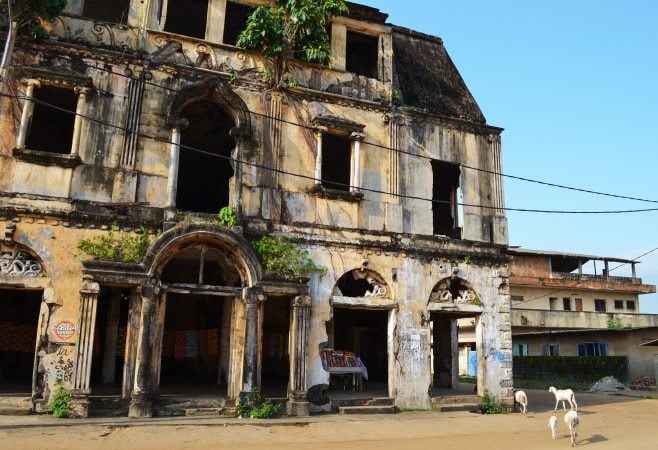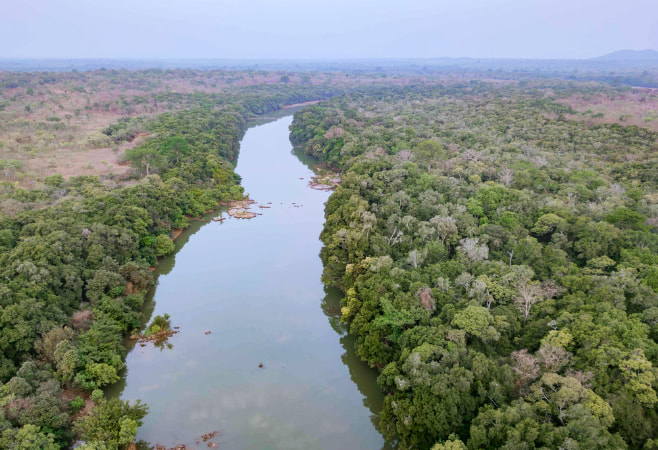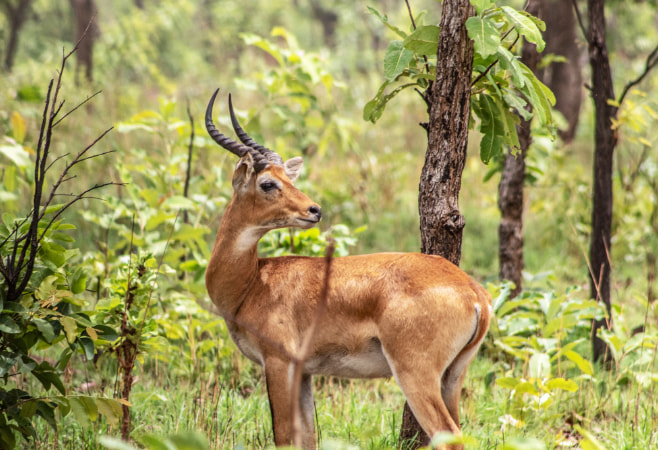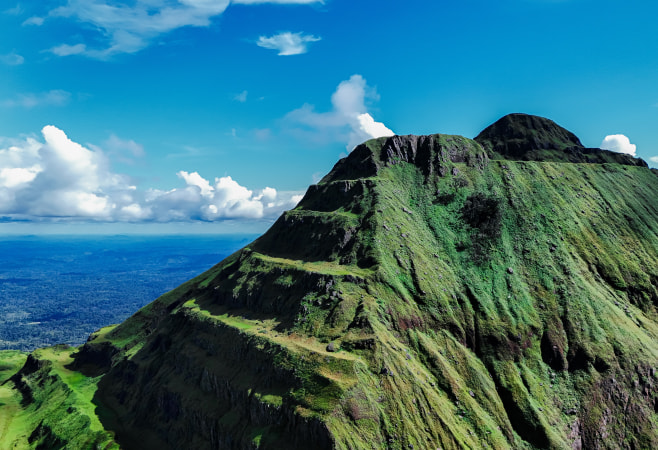Top World Heritage Sites in Ivory Coast You Must Visit
Ivory Coast, or Côte d'Ivoire, is home to stunning World Heritage Sites that showcase its rich cultural heritage and biodiverse ecosystems. Recognized by UNESCO, these sites offer travelers and locals a chance to explore the country’s historical, architectural, and natural wonders. This guide dives into the World Heritage Sites in Ivory Coast, providing practical tips, historical context, and travel advice to help you plan an unforgettable visit.
Overview of World Heritage Sites in the Ivory Coast
Ivory Coast has five UNESCO World Heritage Sites, each representing a distinct facet of the country's identity. These are two cultural and three natural sites that highlight the country's mix of human history and environmental variety.
Why Visit Ivory Coast's World Heritage Sites?
- Exploring a World Heritage Site on the Ivory Coast reveals a pristine environment and unusual species.
- Learn about West African history and culture.
- Support sustainable tourism and conservation activities.
- Connect with local communities and traditional ways of living.
- Côte d'Ivoire has something for everyone, including adventurers, historians, photographers, and nature lovers.
 The historic town of Grand-Bassam, a colonial settlement, was established toward the end of the 19th century and into the early 20th century.
The historic town of Grand-Bassam, a colonial settlement, was established toward the end of the 19th century and into the early 20th century.
List of UNESCO World Heritage Sites in Ivory Coast
Ivory Coast currently has five UNESCO-listed sites:
- Taï National Park (Natural Site)
- Comoé National Park (Natural Site)
- Mount Nimba Strict Nature Reserve (Natural Site, shared with Guinea)
- Historic Town of Grand-Bassam (Cultural Site)
- Sudanese-style Mosques in Northern Ivory Coast (Cultural Site)
Let’s dive into each one!
1. Historic Town of Grand-Bassam (Cultural Site)
- Location: Southeastern Ivory Coast, near Abidjan.
- Type: Cultural.
- Inscribed: 2012.
Why It’s Special
Grand-Bassam, the historical capital of Ivory Coast and a lovely colonial coastal town. Grand-Bassam is an exceptional coastal town with fascinating aspects of the Ivory Coast’s colonial history, with cultural blends. The 19th- and early 20th-century architecture, French colonial buildings, colorful markets, and traditional N’zima fishing villages tell a story of trade, colonization, and local resolve.
Highlights
- Colonial Buildings – Visit the Governor’s Palace, old post office, and decorated merchant homes.
- Mix of Cultures: You can witness European, African, and Islamic cultures all blending together in this city.
- Beaches: Beautiful Atlantic shorelines, at their best in the dry season (November-March).
Travel Tips
- Best Time to Visit: Dry season (November–March) for nice weather, less rain (50–100 mm/month).
- Activities: Take guided walking tours, stroll National Costume Museum, or relax at the beach.
- Access: Not far from Abidjan (45 minutes by car). Take taxis or use ride-hailing apps like Yango.
- Conservation Tip: Honor conservation by not littering and also buying local crafts.
 National Museum of Costume in Grand Bassam, Ivory Coast
National Museum of Costume in Grand Bassam, Ivory Coast
2. Comoé National Park (Natural Site)
- Location: Northeastern Ivory Coast.
- Type: Natural.
- Inscribed: 1983 (Restored in 2017 after being endangered).
Why It’s Special
Comoé National Park is one of the largest protected areas in West Africa, covering an area of 11,500 km² of savannah, woodland, and riparian forests. It’s a biodiversity hotspot, containing the African Elephant, the king of the jungle — the Lion, the tree-climbing Leopard, plus over 500 bird species. The Comoé River is host to a special ecosystem, and therefore draws nature enthusiasts.
Highlights
- Wildlife: Look out for elephants, hippos, and rare primates such as the Diana monkey.
- Habitats: Various habitats, ranging from grasslands to gallery forests.
- Research Hub: One of the most important places for conservation in West Africa.
- Fun Fact: The park is the only one in West Africa where the northern and southern climates come together.
Travel Tips
- When to Go: Wildlife: Dry season (November–March) to see animals congregate at water sources. Stay away during the heavy rainy season (May- July, ~500 mm in June).
- Things to do: Book professionally guided safaris or bird watching tours with certified operators.
- Challenges: The park had been placed on UNESCO’s “In Danger” list because of poaching, but it was taken off in 2017 after the authorities made conservation their priority. Look for up-to-date safety advisories.
- What to Bring: Binoculars, neutrally colored clothing, and mosquito repellent (though, with the possible exception of the shorter rainy season in September and October, mosquitoes aren’t likely to be a big problem).
 The Comoé National Park, located in the Zanzan and Savanes districts of north-eastern Ivory Coast, is a Biosphere Reserve and UNESCO World Heritage Site.
The Comoé National Park, located in the Zanzan and Savanes districts of north-eastern Ivory Coast, is a Biosphere Reserve and UNESCO World Heritage Site.
3. Taï National Park (Natural Site)
- Location: Western Ivory Coast, near the Liberian border.
- Type: Natural.
- Inscribed: 1982.
Why It’s Special
Taï National Park is one of the last remaining primary rainforests in West Africa, with 3,300 sq km. “Those forests are crucial habitats for endangered species like the pygmy hippopotamus, chimpanzees, and forest elephants. Its crowded jungles and abundant wildlife make it a paradise for eco-tourists and scientists.
Highlights
- Chimpanzee Research: Home to habituated groups of chimps being studied for more than 3 decades.
- Flora: More than 1,300 species of plants, many with exotic wood.
- Cultural Connections: Local communities such as the Oubi and Guéré traditions are entwined with forest culture.
Travel Tips
- When to Go: Dry season (November–March) for the most accessible trails. The trails turned very muddy, and the paths were quite slippery.
- Activities: Take guided hikes to watch chimpanzees or to see the forest’s rare plants.
- Accessibility: Abidjan is accessible by a 6- to 8-hour drive. Bring a licensed guide with you to untangle the complex nature of visiting the park and up your chances of spotting wildlife.
- Conservation Notes: Help eco-lodges and do not disrupt wildlife to help with preservation.
 Taï National Park (Parc National de Taï) contains one of the last areas of primary rainforest in West Africa.
Taï National Park (Parc National de Taï) contains one of the last areas of primary rainforest in West Africa.
4. Mount Nimba Strict Nature Reserve (Natural Site – Shared with Guinea)
- Location: On the border between the Ivory Coast, Guinea, and Liberia.
- Type: Natural.
- Inscribed: 1981.
Why It’s Special
Mount Nimba Strict Nature Reserve, a transboundary site with unique montane habitats and endemic species, such as the Nimba otter shrew and viviparous toads. Its rugged summits up to 1,752 meters and varied flora render the reserve a priority conservation area; however, it is still inscribed on UNESCO’s “In Danger” list due to mining pressures.
Highlights
- Unique Species: Rare mammals and plants that are not found anywhere else.
- Geology: Stunning terrain with mountains rich in iron ore.
- Cultural Importance: It is sacred to the local Dan and Mano people.
Travel Tips
- When to go: Dry season (November to March) for safe hiking. Steer clear when it’s raining (May–July).
- Activities: Guided hikes and ecological tours, with a focus on biodiversity.
- Challenges: Accessibility is restricted from the Ivory Coast because of stringent conservation policies and experiences of continued mining. Before going to a site, please confirm its opening status with local authorities.
- What to Bring: Hiking boots, rain gear, and a camera to capture the stunning views.
 Mount Nimba Strict Nature Reserve is a protected area and UNESCO World Heritage Site located in Guinea, Liberia, and Côte d'Ivoire.
Mount Nimba Strict Nature Reserve is a protected area and UNESCO World Heritage Site located in Guinea, Liberia, and Côte d'Ivoire.
5. Sudanese-style Mosques in Northern Côte d’Ivoire (Cultural Site)
- Location: Northern villages like Kong, Tengréla, and Kaouara
- Type: Cultural
- Inscribed: 2021
Why It’s Special
- The villages all contain a central mosque built with money from the International Fund for Agricultural Development in the indigenous Sudano-Sahelian style of mud mosque design common to the region.
- The geographic spread of Islam and the influence of Muslim trade on West Africa represent the spread of Islam and trans-Saharan trade.
- Special for their vigas (wooden beams), adobe walls, and historic significance.
- Cultural Tip: Be modest and follow local customs when you visit religious places.
Activities:
- Explore the work of unique earthen architecture and traditional construction.
- Join and see Islamic prayer and quran teaching.
- Attend or observe community and cultural events associated with the mosques.
- Discover the historical importance of the mosques at the time of trans-Saharan trade and Islamic spread.
- Interact with local communities working to save this living history.
- The religious, cultural, and historical heritage of the region is vivid and alive in these activities.
Practical Tips for Visiting World Heritage Sites in Ivory Coast
Travel planning tips
- Visa for Entry: A visa is required for most travelers to Ivory Coast. The e-Visa application is the most popular pre-application process for short-term visits who want to is time and convenient.
- Getting there: local flights or 4x4 vehicles for remote areas.
- Local Guides: For most treks, you will have to hire a local guide for your own safety and to understand the culture.
- Language: French, learn a little or bring someone who speaks it.
 Ivory Coast boasts several UNESCO World Heritage sites that are popular destinations for tours.
Ivory Coast boasts several UNESCO World Heritage sites that are popular destinations for tours.
Best Time to Visit
Dry Season (November-March): Best time to visit all areas, with little rain (50-100 mm per month), accessible trails. Avoid the principal rainy season (May–July, ~1,800 mm/yr) to avoid flood problems, especially in Comoé and Taï.
Travel Essentials
Clothes: Dress for a humid (80 %+ humidity) climate in light fabrics that breathe.
Some waterproof gear for short rains (September - October).
Health: Use mosquito repellent and consider taking malaria prophylaxis, particularly for forest parks such as Taï.
Permits: Special permits are required for places including Mount Nimba. Check with the Ivory Coast’s Ministry of Environment or tour operators.
Getting Around
- In Abidjan, the easiest site to reach is Grand-Bassam (a 45-minute drive).
- Comoé and Taï require longer drives (half a day to two days) or domestic flights to smaller towns nearby, like Korhogo and San-Pédro.
- Employ local guides for a good measure of safety and to learn a thing or two about both cultural and ecological perspectives.
Ethical Tourism
- Contribute to local communities by buying crafts, such as elephant-shaped carvings, in the markets in Grand-Bassam.
- Do not purchase items that are made from endangered species, such as ivory, in order to help save the African Elephant.
How to Support Conservation
- Donate: Give to organizations such as the African Parks Network or UNESCO’s World Heritage Fund.
- Volunteer: Participate in local projects that are involved in reforestation or that aim to stop poaching.
Frequently Asked Questions (FAQs)
1. How many UNESCO World Heritage Sites are in Ivory Coast?
Ivory Coast has five UNESCO-listed sites (three natural, two cultural).
2. Which is the most visited World Heritage Site in Ivory Coast?
The Historic Town of Grand-Bassam is the most accessible and tourist-friendly.
3. Are these sites safe for tourists?
Yes, but check travel advisories and visit with authorized guides.
4. Can I visit Mount Nimba Strict Nature Reserve?
Access is restricted due to conservation efforts—special permits are required.
5. What is the first World Heritage Site in Côte d'Ivoire?
The first site listed was Mount Nimba Strict Nature Reserve in 1982, as an extension of a site that was listed in Guinea the year prior.
The World Heritage Sites in Ivory Coast reveal a country rich in nature, culture, and history. Whether you’re standing beneath ancient colonial buildings in Grand-Bassam, spotting chimpanzees in Taï, or admiring clay mosques in the north, each site offers a meaningful, immersive experience.
Ready to explore the soul of West Africa? Let the treasures of Côte d’Ivoire’s UNESCO World Heritage Sites guide your journey.
Related Articles
- Ivory Coast Birdwatching: Where Are Best Spots & Species
- Top Kitesurfing Spots in Ivory Coast: Where and When
- Ivory Coast Visa and Travel Advisory Updates for Tourists
- Ivory Coast Desserts: Must-Try Dishes for Travelers
- Top African Airports Every Traveler Should Know
- Visa-Free Travel to the Ivory Coast - Things to Know
- Top Outdoor Activities to Experience in the Ivory Coast
- Top Must-Do Activities in the Man Region You Can’t Miss
- Best eSIM for Ivory Coast Travel: Everything You Need to Know
- Hiking Mount Nimba: Trails, Wildlife, and Conservation Info
HOW CAN WE HELP?
APPLY WITH CONFIDENCE
|











